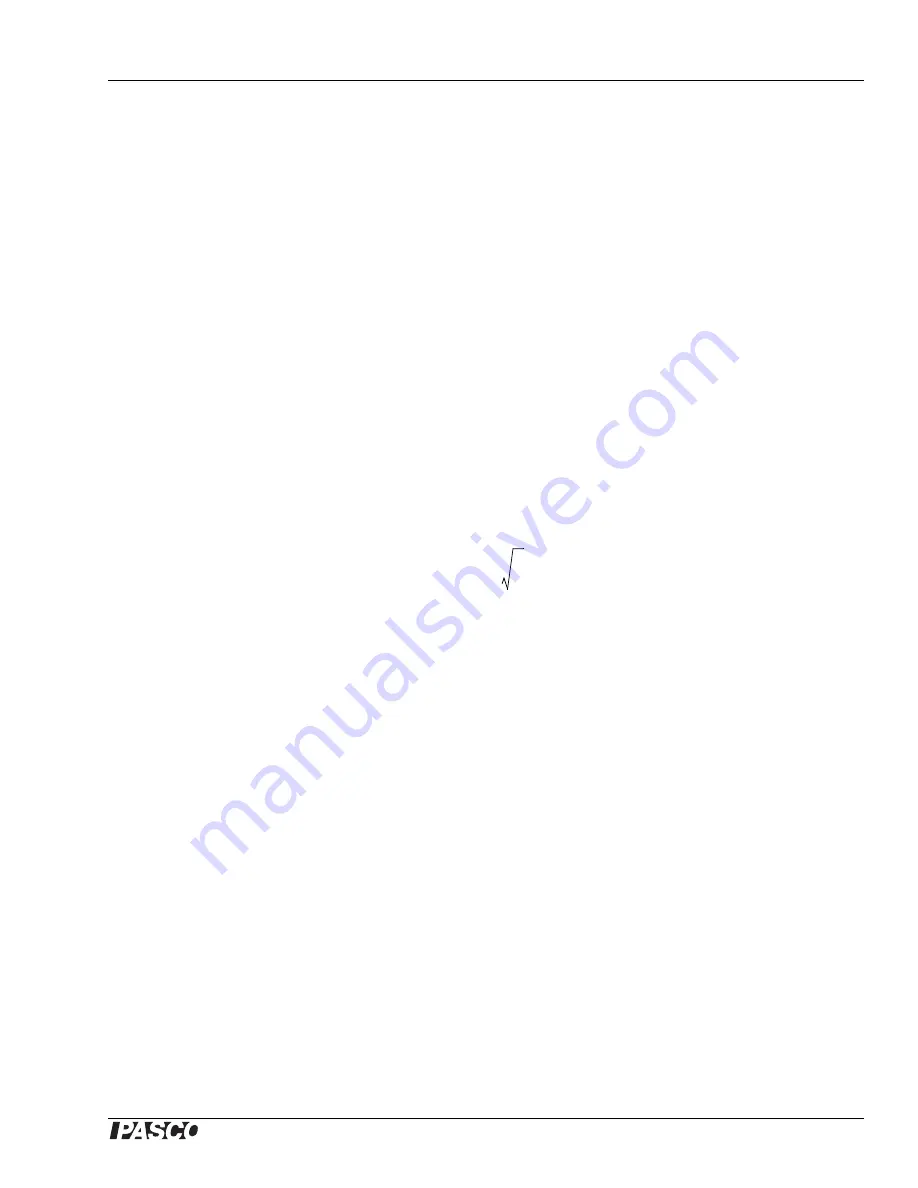
Model No. WA-9857
Experiment 2: Standing Waves In Strings
19
®
Procedure
1.
Adjust the tension by adding to or subtracting from the hanging mass so that the string
vibrates in 2 segments. Adjust the tension further to achieve a “clean” node at the center. Also
check the end of the vibrating blade; the point where the string attaches should be a node. It is
more important to have a good node at the blade than it is to have the largest amplitude
possible. However, it is desirable to have the largest amplitude possible while keeping a good
node.
2.
Record the hanging mass, m (do not forget to include the mass of the hanger). How much
uncertainty is there in your value? By how much can you change the hanging mass before you
see an effect? Record the uncertainty.
Analysis Method 1
1.
Calculate the tension (including the uncertainty) in the string.
Tension = F = mg
2.
Calculate the speed (including uncertainty) of the wave from your observed values of tension
(F) and linear density (
µ
).
Record your calculated value with the uncertainty and the correct number of significant
figures.
3.
Calculate the speed from the wavelength (
λ
) and frequency (f).
v
λ
f
=
λ
f
(In the U.S. f = 60.0 Hz. In most other countries f = 50.0 Hz.)
4.
Compare the two values of speed. What is the difference? How does the difference compare
to the uncertainty that you determined in step 2?
5.
Calculate the percentage by which v
F
µ
deviates from v
λ
f
.
6.
Repeat the Procedure and this analysis for standing waves of three and four segments.
Analysis Method 2
1.
Repeat the Procedure for standing waves of 3, 4, 5, etc. segments. Get as many as you can.
Record the mass, m, (including uncertainty) and the number of segments, n, in a table.
v
F
µ
F
µ
---
=
% Deviation =
v
F
µ
v
λ
f
–
v
λ
f
----------------------
100%
×
Summary of Contents for WA-9857
Page 26: ......








































